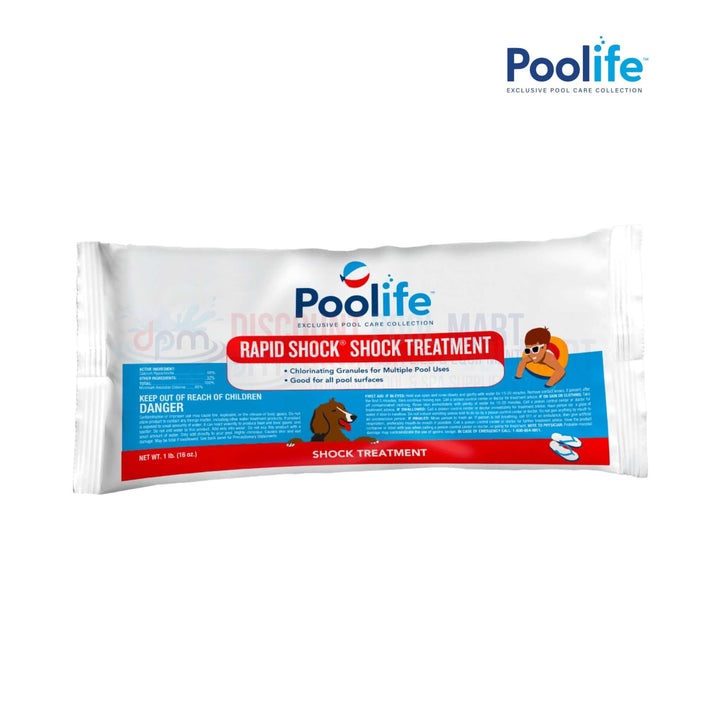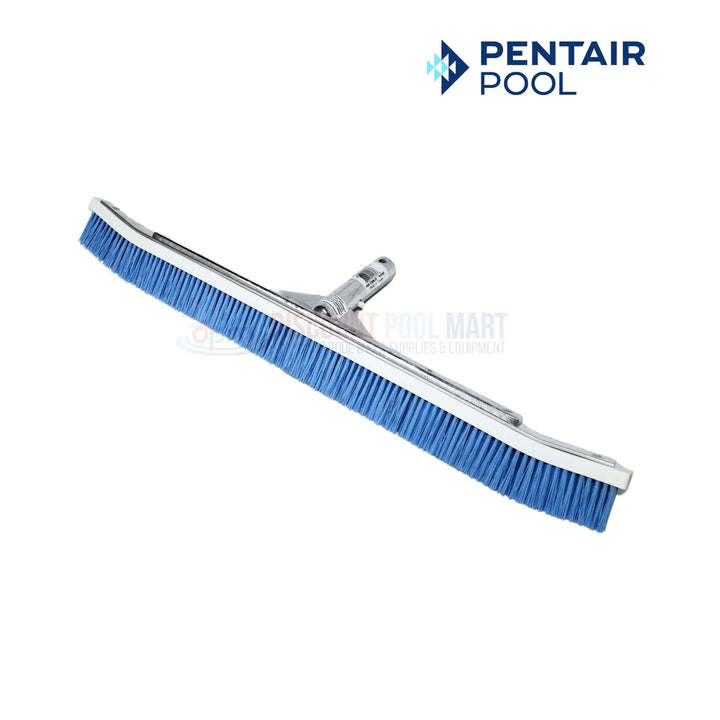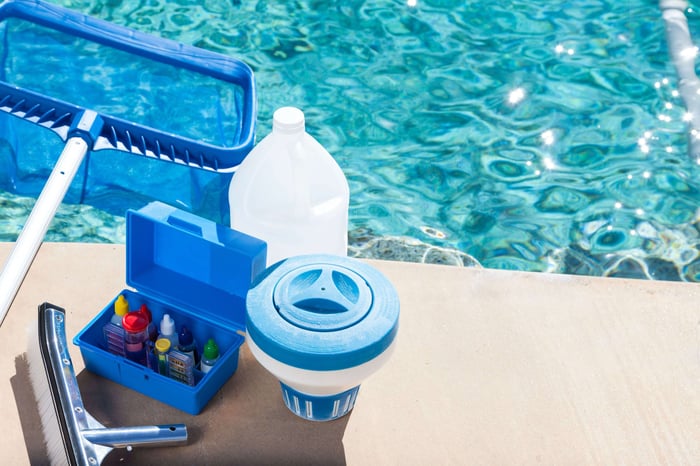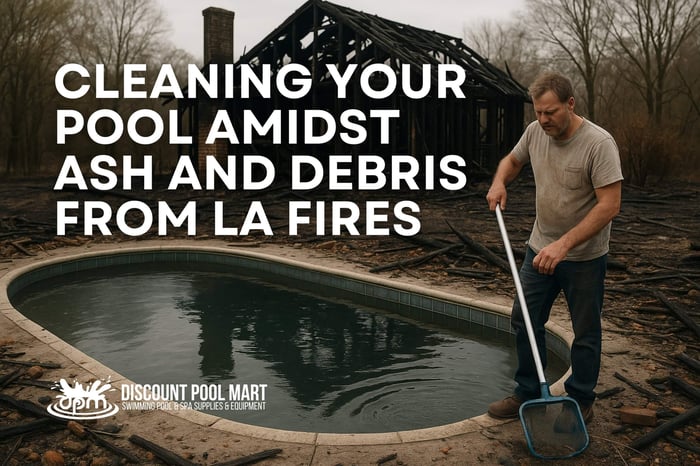The Most Common Pool Maintenance Mistakes and How to Avoid Them
Owning a pool is a great way to relax, entertain, and enjoy the outdoors, but keeping it in top condition requires regular maintenance. While some pool owners follow a strict care routine, others unknowingly make mistakes that can lead to algae growth, equipment damage, and expensive repairs.
If you’ve ever struggled with cloudy water, clogged filters, or green pool nightmares, you’re not alone. Many common maintenance errors stem from small oversights that snowball into larger problems. The good news? Most of these mistakes are easily preventable with the right knowledge and approach.
Let’s dive into the most common pool maintenance mistakes and how to avoid them to keep your pool clean, safe, and hassle-free all year long.
1. Not Testing and Balancing Pool Chemicals Regularly
Why It’s a Problem:
Failing to check and balance your pool water at least once a week can cause unsafe swimming conditions, encourage algae growth, and damage your pool surfaces and equipment.
- Low chlorine levels lead to bacteria and algae growth.
- High chlorine levels can cause skin and eye irritation.
- Unbalanced pH can lead to scaling, cloudy water, and corrosion of pool parts.
How to Avoid It:
✔ Test your water at least once a week using test strips or a liquid test kit.
✔ Maintain proper levels:
- Chlorine: 1-3 ppm
- pH: 7.4-7.6
- Alkalinity: 80-120 ppm
- Calcium Hardness: 200-400 ppm
- Cyanuric Acid (Stabilizer): 30-50 ppm
✔ Adjust chemicals as needed immediately to prevent problems from escalating.
2. Ignoring Your Pool Filter
Why It’s a Problem:
Your pool filter is the first line of defense against dirt, debris, and algae spores. A neglected filter can become clogged, forcing your pump to work harder and increasing energy costs.
- A dirty filter can lead to poor water circulation, causing cloudy water and algae growth.
- If the pressure gauge reads 8-10 PSI above normal, it means your filter is clogged and needs cleaning.
How to Avoid It:
✔ Clean your filter regularly
- Cartridge Filters: Rinse every 2-4 weeks; replace every 1-2 years.
- Sand Filters: Backwash when pressure increases; change sand every 3-5 years.
- DE Filters: Backwash when needed; clean thoroughly every 6 months.
✔ Never run your pool without a filter—this can cause serious damage to the pump.
3. Not Running Your Pool Pump Long Enough
Why It’s a Problem:
Your pool pump keeps water circulating, preventing debris buildup and helping distribute chemicals evenly. If you don’t run your pump long enough, water stagnates, leading to algae growth, cloudiness, and bacteria buildup.
How to Avoid It:
✔ Run your pump for at least 8-12 hours a day, especially during summer.
✔ If you live in Los Angeles or other warm areas, you may need longer run times due to increased sun exposure and evaporation.
✔ Invest in a variable-speed pump to run it longer without spiking energy costs.
4. Shocking Your Pool the Wrong Way
Why It’s a Problem:
Shocking (super-chlorinating) is necessary to kill bacteria, algae, and organic contaminants, but many pool owners do it incorrectly.
Common Mistakes:
- Adding shock during the day—UV rays burn off chlorine too quickly.
Poolife Rapid Shock Pool Shock Treatment | 68% Calcium Hypochlorite | 1 lb. | 22232

$4.99
$9.99
Introducing Poolife Rapid Shock Pool Shock Treatment, the ultimate solution for maintaining a pristine and crystal-clear swimming pool. Packed with 68% Calcium Hypochlorite, this 1 lb shock treatment, is designed to provide a rapid and efficient boost to your pool's… read more
- Pouring shock directly into the pool, which can damage liners and surfaces.
- Not brushing after shocking, allowing algae to cling to surfaces.
How to Avoid It:
✔ Shock your pool at night to allow the chlorine to work properly.
✔ Dissolve shock in a bucket of water before adding it to the pool to prevent staining.
✔ Brush your pool after shocking to loosen algae and debris.
✔ Wait at least 8-12 hours before swimming, and test chlorine levels before getting in.
5. Not Brushing Your Pool Walls and Steps
Why It’s a Problem:
Even with good circulation, algae and bacteria cling to surfaces like walls, steps, and corners where pool vacuums can’t always reach.
How to Avoid It:
✔ Brush your pool at least once a week—especially in hard-to-reach areas.
✔ Use a nylon brush for vinyl/fiberglass pools and a stainless steel brush for plaster/concrete pools.
Pooline Stainless Steel Brush for Black Algae, Rust Stain On Concrete, Calcium Build Up 10" | 11024B

$14.99
$19.99
The Pooline Stainless Steel Brush for Black Algae, Rust Stain On Concrete, Calcium Build Up 10" | 11024B is a high-quality pool brush designed for effective cleaning. Its stainless steel bristles provide sturdy scrubbing power, removing debris, black algae, rust… read more
R111342 | Pentair Swimming Pool Curved Brush | Nylon Bristles | Aluminum Brush

$39.99
$49.99
OEM Pentair Curved Pool Brush R111342 is a heavy-duty 25-inch cleaning brush designed with an aluminum back to enhance strength and extend durability. It uses UV-stabilized blue nylon bristles that are gentle on surfaces while providing effective cleaning for pool… read more
6. Forgetting to Check Water Levels
Why It’s a Problem:
Water levels drop due to evaporation, splashing, and backwashing, and if the level gets too low, your pump can suck in air and overheat, causing costly damage.
How to Avoid It:
✔ Keep water levels halfway up the skimmer opening.
✔ After a heatwave, heavy rain, or splash-heavy day, check and adjust water levels as needed.
7. Ignoring Small Leaks or Pool Equipment Issues
Why It’s a Problem:
A small leak can waste hundreds of gallons of water per day and increase your water bill.
- Signs of a leak:
- Constantly needing to refill the pool
- Wet spots around the pool
- Visible cracks in the pool surface
How to Avoid It:
✔ If you suspect a leak, perform a bucket test—fill a bucket with pool water, place it on a step, and mark the water level. If the pool level drops faster than the bucket, you likely have a leak.
✔ Address equipment malfunctions immediately to avoid bigger issues.
8. Adding Pool Chemicals Incorrectly
Why It’s a Problem:
Dumping all your chemicals into the pool at once can cause imbalances, staining, or ineffective treatments.
How to Avoid It:
✔ Add chemicals one at a time, allowing them to circulate before adding the next.
✔ Always add chemicals to water (never water to chemicals) to avoid dangerous reactions.
✔ Use a pool brush to help distribute chemicals evenly.
Final Thoughts: Stay Ahead of Pool Problems
Pool maintenance is easy when you stick to a routine and avoid these common mistakes. Ignoring even one aspect of pool care can lead to expensive repairs, frustrating water issues, and more time spent troubleshooting instead of swimming.
Key Takeaways:
- Test and balance chemicals weekly to prevent algae and equipment damage.
- Keep your pump and filter running efficiently for proper water circulation.
- Brush walls and steps to prevent algae growth.
- Shock your pool at night and the right way.
- Keep an eye on water levels, leaks, and equipment issues.
By staying on top of weekly maintenance, you’ll enjoy a crystal-clear, hassle-free pool all season long—without the costly repairs.




